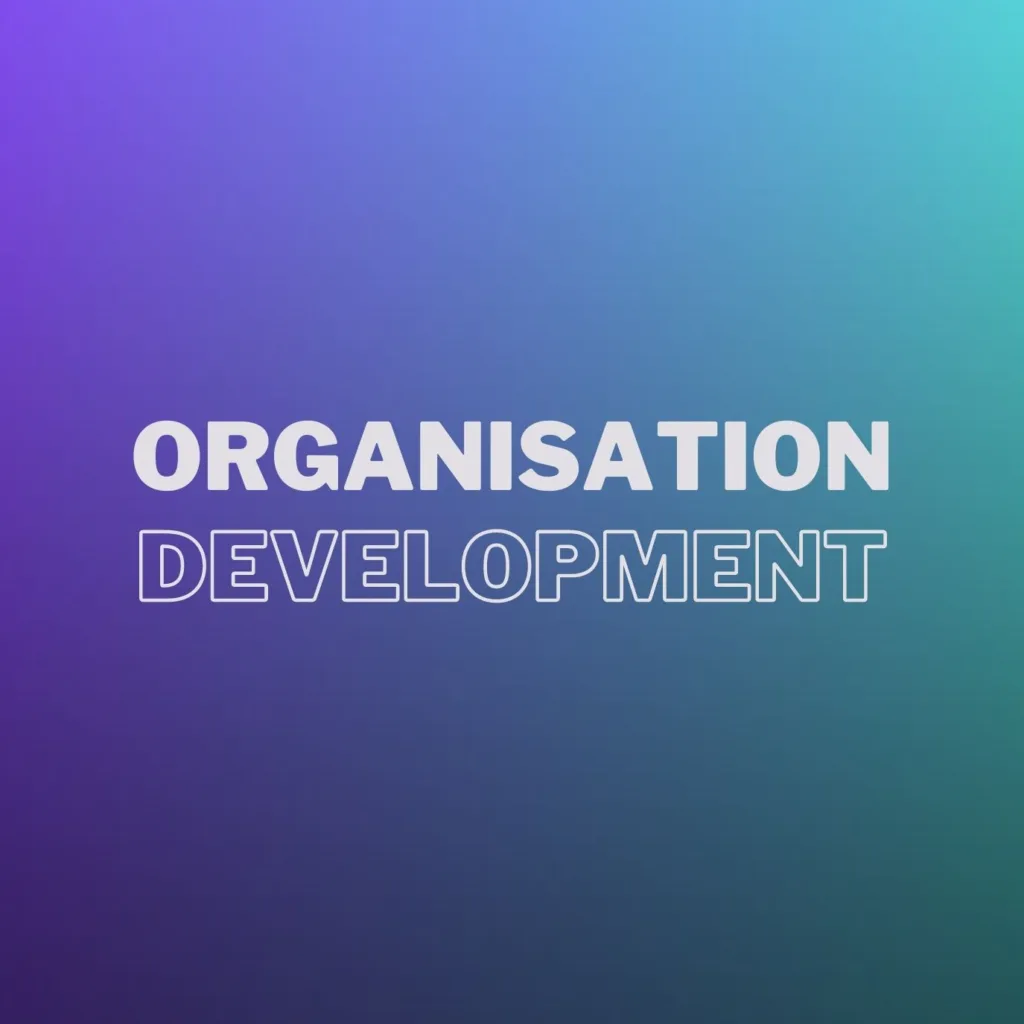Navigating Conflict: A Comprehensive Guide to Conflict Management

Introduction
“Conflict is the gadfly of thought,” so proclaimed the esteemed philosopher, Socrates. It stings and nudges us out of our complacency and comfort zones. In today’s dynamic organizations, his wisdom resonates more than ever.
Imagine this scenario: You’re part of a highly competent team, each member brimming with innovative ideas. Naturally, these ideas don’t always align, and disagreements arise. Should these conflicts be viewed as a crippling hurdle or an opportunity for growth? Well, the key lies in the perspective you adopt.
Indeed, conflict is often perceived as a detrimental force — an unpleasant disruption in the otherwise smooth functioning of a team. However, such a viewpoint overlooks an essential truth about conflict: it is not inherently harmful. Instead, it is the mishandling of conflict that poses a threat.
In the swirling currents of ideas, perspectives, and personalities that make up a team, disagreements are bound to surface. Yet, when these conflicts are managed effectively, they can transform into stepping stones towards improvement and innovation. They can trigger thought-provoking discussions, reveal hidden issues, and pave the way for holistic solutions.
Therefore, it is not the presence of conflict itself that determines a team’s success, but how that conflict is navigated and managed. This concept is the cornerstone of conflict management.
In this article, we will delve deep into the realm of conflict management, exploring its nuances, and understanding its critical role in today’s ever-changing business landscape. We will discover how effective conflict management can turn the ‘gadfly’ of thought into a powerful engine of growth, innovation, and cohesion within a team. Welcome to a comprehensive guide to navigating conflict. Let’s begin the journey!
Understanding Conflict Management
Conflicts are inevitable, whether in personal relationships, workplaces, or global affairs. Understanding the roots of conflict can pave the way to effective resolutions and smoother relationships. In simple terms, conflict is a disagreement or clash of interests, values, or perceptions among individuals or groups. While it sounds somewhat terrible, conflict isn’t necessarily bad. In fact, it can be a catalyst for positive change, encouraging new ideas, fostering creativity, and strengthening relationships when managed effectively.
Conflict management refers to the practice of identifying and addressing disputes in a professional environment in a sensible, fair, and efficient manner. It is a key skill that facilitates effective communication, fosters teamwork, and mitigates the potential negative impacts of conflict on productivity and workplace harmony.
Main Sources of Conflict
Conflicts don’t just spring up out of nowhere. They are typically rooted in certain identifiable factors. Let’s dive into these main sources of conflict.
Personal Differences
Every individual brings their unique traits, backgrounds, values, and experiences to the workplace. While this diversity can fuel creativity and innovation, it can also lead to conflicts. Differences in personality types, communication styles, or work habits can create misunderstandings or friction between team members.
For instance, consider a team with an extroverted, spontaneous member and an introverted, detail-oriented colleague. The extrovert’s preference for on-the-spot brainstorming may conflict with the introvert’s need for structured planning and quiet reflection time.
Informational Differences
Another common source of conflict is informational differences. This occurs when team members have mismatched or incomplete information. It could be due to poor communication, lack of transparency, or simple misunderstandings.
Imagine a scenario where two departments are working on an interconnected project. If one department makes a decision without properly communicating it to the other, this could lead to confusion, disrupted work processes, and, ultimately, conflict.
Role Incompatibility
Role incompatibility arises when there are unclear or conflicting job roles and responsibilities. When team members are uncertain about their duties or feel that their roles overlap with others, it can lead to power struggles, turf wars, and disagreements.
Take the case of a marketing project where both the brand manager and the digital marketing specialist believe they should lead the social media strategy. This role confusion could trigger a conflict if not clarified promptly.
Environment-Induced Conflict
Often, the environment or context in which a team operates can give rise to conflicts. Factors like resource scarcity, high-stress situations, tight deadlines, or changes in management can create an atmosphere conducive to disagreements and disputes.
For example, if a team is given a major project with a tight deadline and insufficient resources, the resulting stress and pressure could spark conflicts over task allocation, workloads, or project direction.
Structural Conflicts
Finally, conflicts can emerge from the very structures and systems within an organization. Hierarchical power dynamics, bureaucratic decision-making processes, or inequities in resource distribution can all lead to structural conflicts.
Consider a company where decisions are made exclusively at the top, leaving lower-level employees feeling unheard and undervalued. This structural imbalance could generate conflicts between management and staff, hampering productivity and morale.
Understanding these sources of conflict is the first step towards effective conflict management. It empowers us to identify potential conflict situations early, intervene proactively, and turn these situations into opportunities for growth and improvement.
Unraveling the Strategies: Five Common Conflict Management Styles
Just as the sources of conflict vary, so do the strategies for managing them. One might consider conflict management to be an art form where different styles can be employed based on the situation and the individuals involved. Let’s dissect these five commonly used strategies:
Collaborating
Think of collaborating as the ultimate win-win solution, akin to two chefs combining their unique recipes to create a spectacular dish. Collaboration seeks a mutually satisfying outcome that respects the needs and concerns of all parties. It calls for open communication, mutual respect, and high degrees of trust. For instance, in a disagreement over a project’s direction, the team could collaboratively create a new plan incorporating everyone’s valuable insights, resulting in a more comprehensive and effective strategy.
Competing
The competing style resembles a sprinter determined to cross the finish line first, focusing primarily on their own needs and concerns. In certain scenarios, like a quick decision needing to be made during a crisis, this assertive approach could be beneficial. However, overuse could harm relationships, turning the workplace into a battlefield rather than a team.
Avoiding
Avoiding conflict management, akin to a nimble deer leaping out of a hunter’s path, involves sidestepping conflict rather than confronting it head-on. This style could be suitable for trivial matters, like a minor disagreement over lunch options. However, evading significant conflicts could lead to larger unresolved issues festering over time, eventually exploding into serious disputes.
Accommodating
Accommodating is the peacekeeper’s approach, similar to a host who ensures all their guests are comfortable, often at their own expense. This style involves prioritizing others’ needs and concerns, fostering harmony and goodwill. However, like a host exhausted from constant accommodating, this could lead to resentment if the individual’s needs are continually sidelined.
Compromising
The compromising style is about finding a middle ground, much like two traders negotiating a fair deal. It seeks a solution that, while not fully satisfying everyone, offers each party something. It may not lead to the optimal solution, but it provides a quick and equitable way to resolve conflicts, especially when time is of the essence.
Navigating Through the Storm: A Step-by-Step Guide to Managing Conflicts
Managing conflicts isn’t just about quelling the storm; it’s about navigating through it with a thoughtful, systematic approach. Here is a roadmap to guide you through this process:
Awareness: Much like spotting a dark cloud on the horizon, recognize when a conflict arises. Awareness is the first step towards resolution.
Rational Approach: Maintain your calm amidst the storm. Stay objective and refrain from letting personal feelings or biases cloud your judgment.
Investigation: Gather as much information as possible, like a storm chaser collecting data to understand the storm better. Understand the perspectives of all parties involved in the conflict.
Strategy Selection: Like choosing the best gear for the storm, select the most appropriate conflict management style based on the situation.
Active Listening: Ensure all parties involved in the conflict have their say. Like a weather broadcast, each voice provides valuable insights into the nature of the storm.
Solution Identification: Generate potential solutions and agree on a course of action, much like plotting a safe route through the storm.
Implementation: Follow through with the agreed-upon plan. Just as you would brace for the storm, take necessary action to address the conflict.
Evaluation: Regularly review the situation to ensure the implemented solution is working effectively, similar to assessing the aftermath of a storm.
Future Planning: Learn from each conflict to prevent similar issues in the future. Like a town implementing better storm safety measures post-disaster, use these experiences to build a stronger, more conflict-resilient team.
A Practical Walkthrough: A Conflict Management Scenario
To better understand the conflict management process, let’s consider a hypothetical situation in a digital marketing firm called ‘TechSolutions.’
Step 1: Awareness
During a team meeting, John, the project manager, notices a heated argument between Linda, a content creator, and Mike, a graphic designer, over their roles in an upcoming project. He identifies this as a potential conflict that needs resolution.
Step 2: Rational Approach
John stays calm and addresses the issue professionally without favoring Linda (his former college mate) over Mike.
Step 3: Investigation
John sets up individual meetings with Linda and Mike to understand their perspectives. Linda feels that Mike is overstepping his role by commenting on the content, while Mike feels that his graphic work depends on the content and he should have input.
Step 4: Strategy Selection
Understanding the nature of the conflict and the personalities involved, John decides that a collaborative approach would be the most effective solution.
Step 5: Active Listening
John sets up a joint meeting where Linda and Mike can express their views. He ensures both parties have an equal opportunity to voice their concerns without interruption.
Step 6: Solution Identification
John helps Linda and Mike brainstorm solutions. They agree on a process where Linda shares an initial content draft with Mike before finalizing, allowing him to provide early input for his designs.
Step 7: Implementation
John ensures the new process is implemented, and Linda and Mike start working together using their mutually agreed-upon method.
Step 8: Evaluation
After a few weeks, John checks in with Linda and Mike individually, and during a team meeting, to ensure the solution is working. Both Linda and Mike confirm that they’re now working more effectively and harmoniously together.
Step 9: Future Planning
Reflecting on this experience, John decides to clarify team roles and communication processes for future projects during project initiation meetings. This will help prevent similar misunderstandings from arising in the future.
This scenario demonstrates the application of the conflict management steps in a real-life situation. It underscores how proactive and effective conflict management can transform potentially disruptive situations into opportunities for improvement and team growth.
Conflict management refers to the strategies and practices used to identify, address, and effectively resolve conflicts in a fair and efficient manner. It aims to reduce the negative impacts of conflict and maximize potential learning and growth that can result from disagreements.
Common causes of workplace conflict include personal differences, informational differences, role incompatibility, environmental stress, and structural issues.
The key conflict management styles include collaborating, competing, avoiding, accommodating, and compromising. The appropriate style depends on the specific situation and the individuals involved.
Early signs of conflict include increased disagreements, withdrawal or avoidance behaviours, hostility or passive-aggressive actions, decreased productivity, and decreased morale or job satisfaction.
When managed effectively, conflict can lead to creative problem-solving, improved communication, better team dynamics, and personal growth. It can also help uncover and address underlying issues within a team or organization.
Communication is central to conflict management. Effective communication helps clear misunderstandings, facilitates mutual understanding, and is crucial in finding and implementing conflict resolutions.
Emotional intelligence – the ability to understand and manage one’s own emotions and those of others – is vital for effective conflict management. It enhances empathy, self-awareness, self-regulation, and interpersonal skills, which are key to managing and resolving conflicts.
If a conflict escalates, it might be necessary to involve a third party, such as a manager, HR representative, or a professional mediator, to facilitate resolution. Ensuring everyone’s safety, both emotional and physical, is paramount.
While it’s impossible to prevent all conflicts, strategies like clear communication, well-defined roles and responsibilities, creating a supportive work environment, and regular team-building activities can help minimize conflicts.
Yes, conflict management is a skill that can be learned and developed through training, practice, and experience. Many organizations provide conflict management training to their employees.
Conclusion
Conflict, by its very nature, stirs us out of our comfort zones and prompts us to seek innovative solutions. In essence, conflict management is a crucial skill in any organization or team. Its importance lies not in the avoidance of disagreements but in understanding and transforming them into opportunities for growth and cohesion. Recognizing the inevitable nature of conflict, this guide has explored its various causes, such as personal differences, informational disparities, role incompatibilities, environmental stresses, and structural conflicts. By recognizing these sources, we can proactively address potential conflict situations and facilitate a healthier, more collaborative work environment.
In managing conflict, a one-size-fits-all strategy is ineffective. Different situations and individuals call for varied approaches, namely collaborating, competing, avoiding, accommodating, and compromising. Implementing these strategies thoughtfully can ensure a fair resolution, where all parties feel heard and valued.
Moreover, conflict management is not just about extinguishing the flames of disagreement. It’s a systematic process that begins with awareness, progresses through rationality, investigation, and active listening, and culminates in implementing and evaluating solutions. Importantly, each conflict offers valuable lessons for the future, enabling teams to evolve and become more resilient. The outlined conflict management scenario demonstrates the practical application of these steps, emphasizing how effective management can foster team growth and harmony.
In conclusion, managing conflict successfully is akin to navigating a storm. It’s not about escaping the storm, but learning to sail our ship effectively amidst the turbulent waves. It’s about transforming the ‘gadfly’ of thought into a powerful engine that drives growth, innovation, and cohesion within a team. As we navigate the ever-changing currents of the modern business landscape, effective conflict management remains our compass, guiding us towards smoother waters and brighter horizons.
Our Repertoire


